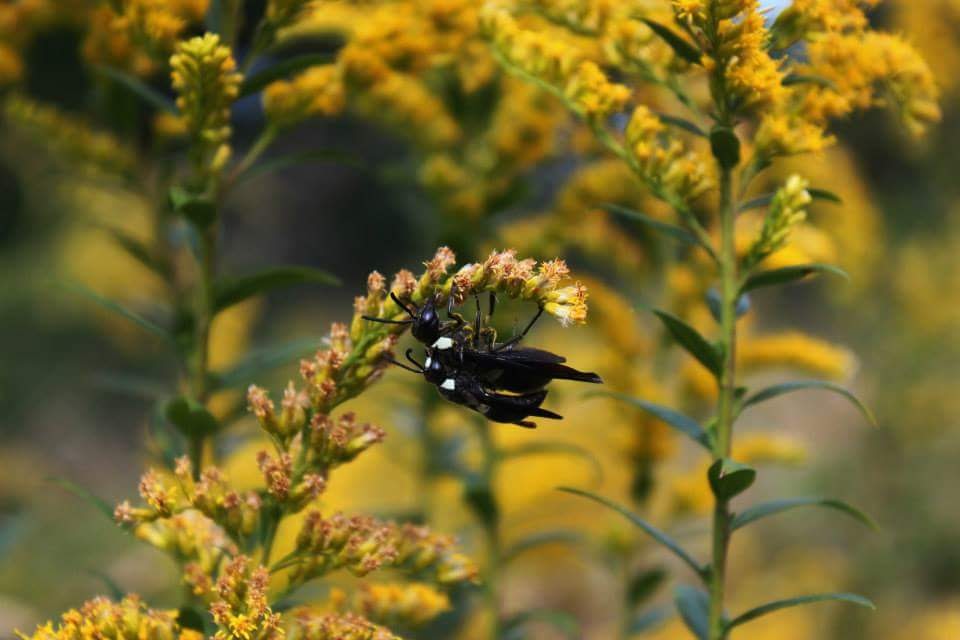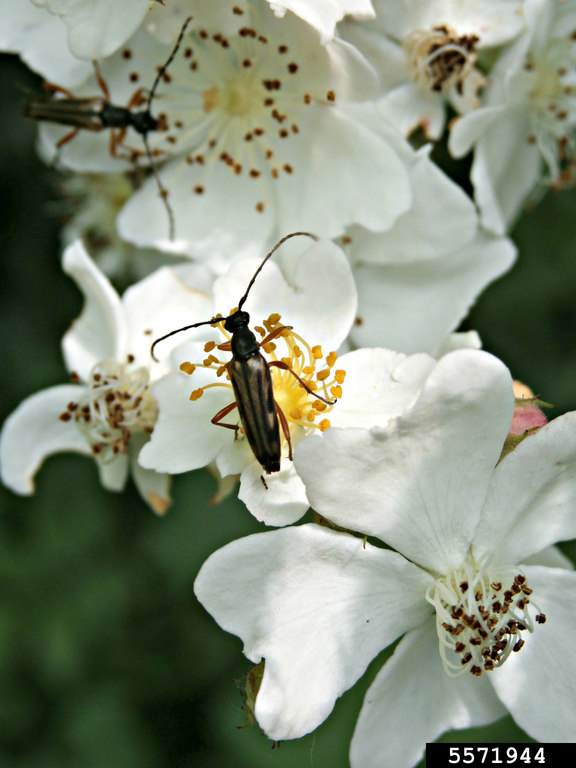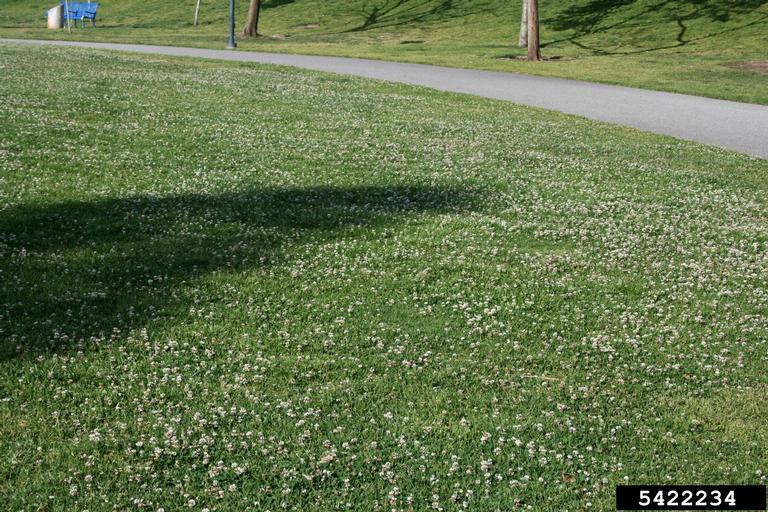The world of beneficial arthropods (insects and their relatives) far exceeds some of the common critters that we often associate with this category. Many of them perform vital functions in our own yards, gardens, and ecosystems all over the world. A very small sliver of all arthropods are considered pests of any kind though there are certainly some pretty devastating pests in this category. Most of these other organisms are either providing benefits or maintaining important ecosystem functions. They are often overlooked, as some of the more charismatic ones (like butterflies, bees, mantids, and lady beetles) take most of the spotlight. These other not-so-glamorous beneficial arthropods are just as important as the more famous ones, and often perform many tasks that go unseen and underappreciated.
I wanted to talk about each group of common beneficial arthropods (Pollinators, Natural Enemies, and Nutrient Cyclers), but as I was writing, I admittedly got a bit carried away. So in order to prevent this blog post from being extremely long, I decided to split this into 3 parts. Stay tuned for the next installments in my spring and summer GP blog posts. In the meantime let’s dig into some under-appreciated pollinators.
Underrated Pollinators

Ah yes, pollinators! Many people consider this their favorite category of beneficials (because very few things are as striking or charismatic as a bee or butterfly sipping nectar from a flower). This is also one of the first groups that come to mind when people think about beneficials in general. The classic image of a monarch butterfly or a honey bee on a flower is often associated as the representative image of this group. That being said, honey bees are just one example of the over 20,000 bee species that are found worldwide. But this group far exceeds butterflies and bees- and some of the less charismatic critters often get an unfair reputation, or just a lack of awareness about what they do. For a variety of reasons, including their anatomy, efficiency, abundance, and direct economic impact, bees are considered the most important pollinators. But many other animals are also great pollinators, some of which are the sole pollinators of certain plant species. In fact most arthropods that visit flowers have the potential to move pollen around, making them possible pollinators. But since I don’t have time to write a whole book’s worth of information into this blog post, I will focus on a few of the larger groups of these less famous pollinators. If you are interested in doing a deeper dive into the world of beneficial arthropods, I will include some resources at the end.
Flies
Flies (order: Diptera) are a huge group of insects, with over 110,000 described species in 150 different families. This group spans a wide variety of very well-known groups like house flies [Muscoidea] and mosquitoes [Culicidae], to not so well-known groups like stalk-eyed flies [Diopsidae] and long-legged flies [Dolichopodidae]. They encompass nearly all biomes and have a broad range of functional groups including predators, parasites, decomposers, and pollinators. In fact, some studies consider flies to be the second most important flower visitors after bees.

According to a literature review by Cook et al. (2020): flies from 86 different families have been reported to visit over 1100 plant species. These flower-visiting fly species also include some that have important potential for crop pollination and have been recorded to visit many horticultural crops. This includes commonly known pollinating flies, e.g., bee flies [Bombyliidae], hoverflies [Syrphidae], and flower flies [Anthomyiidae]. But some flies we don’t usually associate with this role such as blow flies [Calliphoridae], flesh flies [Sarcophagidae], and horse flies [Tabanidae], and some that many may never have heard of such as nose flies [Rhiniidae] and march flies [Bibionidae], are included. Some species are even considered to have potential as managed pollinators, a role that we most commonly associate with honey bees and some other bee species.
Fun fact: only female mosquitoes need a blood meal in order to reproduce, whereas male mosquitoes feed on nectar, making mosquitoes pollinators! In fact, mosquitoes have been studied as pollinators of orchids, like the Blunt-leaf Orchid, Platanthera obtusata, among other plants.
Moths
We all know butterflies and moths (order: Lepidoptera) are well-documented flower visitors and important pollinators. Despite this, butterflies often get most of the limelight and attention from the general public while many moths often end up being overlooked. Even though moths make up nearly 90% of the over 160,000 described Lepidoptera species, there is a disproportionate amount of research that has historically been conducted on them when compared with butterflies. It has also been demonstrated that moths are the most important nocturnal pollinators, which is fairly intuitive when you think about their nocturnal foraging biology. A study conducted in Sussex by Anderson et al. (2023) demonstrated that moths had higher pollen deposition rates on bramble species indicating that they are more efficient pollinators of brambles than their diurnal counterparts. This has implications for the importance of moths in other plant groups as well, as new research continues to be conducted.

Fun fact: My favorite story to tell about plant-pollinator interactions is of Darwin’s Star Orchid (Angraecum sesquipedale). Charles Darwin was sent a sample of this striking orchid from Madagascar in 1862. Upon examination he found that the nectar tubes were 30 cm (~12 inches) deep! Based on this, Darwin hypothesized that it would take something that has a really long tongue to be able to access that nectar but nobody believed there could be such an insect and he was ridiculed by other scientists. In 1867 Alfred Russel Wallace examined the orchid and predicted there must be a moth in Madagascar that can reach this nectar in order to pollinate the plant. But no moth had ever been discovered which had a proboscis (a coiled and elongated mouthpart of butterflies and moths that is used to suck up nectar) that long. It wasn’t until decades later in 1903 a moth meeting these specifications was discovered. Aptly named in honor of the scientist who predicted its existence, Wallace’s sphinx moth (Xanthopan praedicta) also known as the ‘predicted moth’ has the longest proboscis (sometimes referred to as a tongue, though it is not quite a tongue) of any insect. This just demonstrates just how amazing plant and insect interactions and coevolutionary relationships truly are!

Wasps
Wasps are in the order Hymenoptera, shared with bees and ants. They often have a bad reputation due to a few particularly aggressive social wasp species that most of us have likely had an unfortunate interaction with. That being said, the wasp group is extremely large, diverse, and species-rich. With over 103,000 described species in the category (and scientist estimates stating that the actual number could be in the millions), wasps span a lot of crucial categories of beneficials including parasitoids, predators, and pollinators.
Many wasp species resemble bees and it can be easy to confuse them for each other when they are visiting flowers. The major differences between the two are the thread-like waist that wasps have, and their less-hairy sometimes shiny, overall appearance. In addition most wasp species are primarily carnivorous, feeding on insects and other sources of meat for their protein needs, making them a great resource for deterring common garden pests (stay tuned for more on that in the next part of the Underrated Beneficials series). Even though most of these wasps are carnivorous, they supplement their diet with sugars which they often get from nectar or honeydew produced by sap-sucking insects, e.g., aphids, and occasionally fruit.

There are also some species of vegetarian wasps. A common example of these are the 300 species of pollen wasps (Masarinae) which, like bees, are nectar and pollen feeders (and many of which are important pollinators of certain plant species, such as the Water Leaf, Hydrophyllaceae). Due to the fact that they have fewer hairs, wasps aren’t as efficient at pollination as bees, however, they can still be very important pollinators. Like bees, some wasps are generalist pollinators, visiting a wide-array of flowering plants, while others are specialists where a group of wasps relies on a group of flowering plants and vice versa. In these cases the pollination of those plants are reliant on these wasps.
Studies have shown that some generalist wasp species are better than some generalist bees at pollinating specific flowers. A 2018 study by Thomson examining the pollinators of the California Bee Plant (Scrophularia californica) showed that the western yellowjacket (Vespula pensylvanica) was a more effective pollinator in terms of pollen deposition when compared with honey bees and bumble bees. Some species of African pineapple lilies (Eucomis autumnalis and Eucomis comosa) and African milkweed (Pachycarpus grandifloras) are primarily pollinated by spider-hunting wasps (Pompilidae) in the genus Hemipepsis. Additionally over 100 species of orchids are reliant on wasps for pollination some of which use sexual mimicry to attract male wasps to flowers! And I would be remiss if I didn’t mention fig wasps (family: Agaonidae), who have been coevolving with their host plant for tens of millions of years. The fig (Ficus sp.) ‘fruit’ is actually an inflorescence (an enlarged stem with lots of little flowers inside). In order to pollinate those flowers, the female fig wasp squeezes into a small opening and moves around, laying her eggs in the ovaries of these flowers thereby spreading pollen from the fig that she was born in. The male offspring will remain in the fig while the new batch of females will emerge and look for a new fig in which to lay their eggs (see resources for more on this fascinating mutualism).
For more information on wasps as pollinators, check out the awesome article by Hooks and Espíndola, linked in the resources!
Fun fact: Sexual mimicry is used by some flowers to attract their pollinators. In these situations, the flowers use a combination of visual and chemical cues including mimicking the scent of specific female wasps and bees to attract males. An example of this can be seen in the wasp family Thynnidae, where male winged-wasps are searching for wingless females to mate with. When they stumble across the warty hammer orchid (Drakaea livida) they confuse it with a female thynnid wasp, because of the similar shape and scent, and try to mate with it. This process results in the pollen being deposited on the abdomen of the male wasp. As he goes to the next orchid in order to mate, the pollen is deposited on the new flower, resulting in pollination.
Beetles
Beetles (order: Coleoptera) are considered to be the largest insect order with over 350,000 described species, which makes up 25% of all known animal species on Earth! Like some of the previously mentioned orders, they include a large diversity of functional groups, including pollinators. Due to the incredible size of this order, they are considered to be the largest and most diverse group of pollinators with an estimated 77,000 flower-visiting species. In fact, based on pollen-covered specimens preserved in amber from 100 million years ago which is 30 million years earlier than the first records of bee pollinators, beetles are considered to be the first recorded insect pollinators! Even now they are considered to be vital pollinators of some of the most primitive flowering plant groups that still exist today, such as Magnolias.

Although some beetles are specialists of certain plant groups ,especially those that are descendants of some of the earliest flowering plant groups including water lilies and magnolias, most are generalist pollinators and will visit a wide array of flowering plants. Some scientists even estimate that flower-visiting beetle species will visit 90% of all 350,000 flowering plant species. Beetle pollination is also essential for certain agricultural crops including Paw Paw (Asimina sp.) and the Atemoya (Annona x Atemoya).
For more information on the fascinating world of beetle pollination, check out the awesome article by Hooks and Espíndola, linked in the resources!
Fun fact: The process of cross-pollination that depends on beetles is referred to as ‘cantharophily’.
Resources
Cook et al. (2020). The Role of Flies as Pollinators of Horticultural Crops: An Australian Case Study with Worldwide Relevance. https://www.ncbi.nlm.nih.gov/pmc/articles/PMC7349676/
Anderson et al. (2023). Marvellous moths! Pollen deposition rate of bramble (Rubus futicosus L. agg.) is greater at night than day. https://journals.plos.org/plosone/article?id=10.1371/journal.pone.0281810
Hooks and Espíndola. (2017). Wasps, surprisingly cool pollinators. https://blog.umd.edu/agronomynews/2020/08/31/wasps-surprisingly-cool-pollinators/
The story of the fig and its wasp. https://www.esa.org/esablog/2011/05/20/the-story-of-the-fig-and-its-wasp/
Hooks and Espíndola.
(2017). Beetles and Pollination.
https://blog.umd.edu/agronomynews/2020/06/29/beetles-and-pollination/












